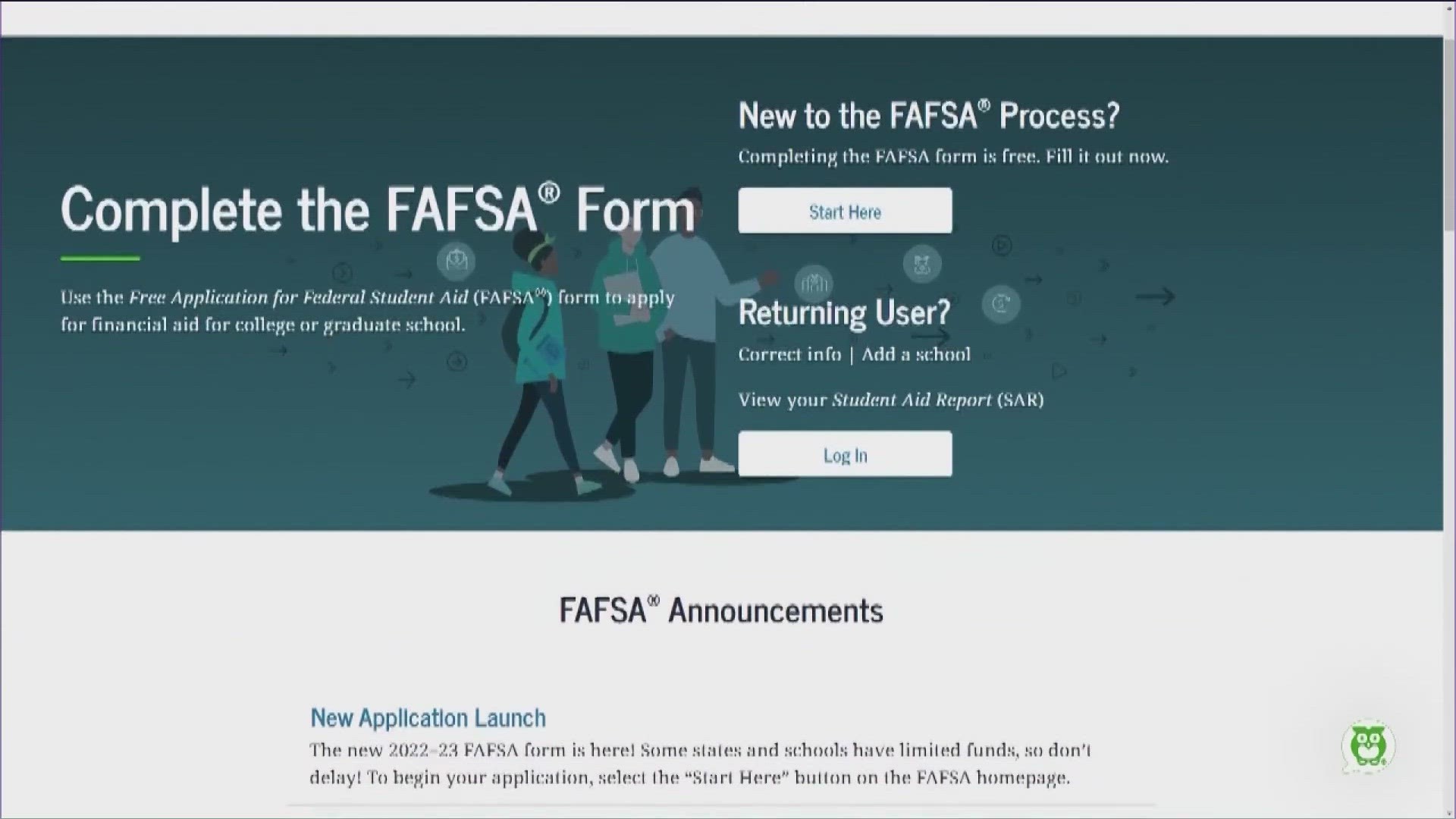AUSTIN, Texas — For many future and current college students, the Free Application for Federal Student Aid (FAFSA) plays an important role in making college affordable. This year, the FAFSA application is seeing significant changes that borrowers should be aware of.
Jennifer Finetti, director of student advocacy at ScholarshipOwl, said typically, the FAFSA has opened on Oct. 1 of each year. Now, the new FAFSA will not open until sometime in December.
"Presumably, it may be Dec. 1, but since they haven't said so, it could be a bit later that month. So it's really important that families prepare for that. The closing date for the FAFSA is typically in Texas by March 15. But if you're interested in qualifying for the Texas grant program, as a lot of students are, they say the priority deadline is Jan. 15," Finetti said.
Finetti said the reason the date was pushed back is because there have been other changes made to the FAFSA and officials weren't ready by Oct. 1.
Another change this year is the application has been simplified. In the past, it's been 108 questions and now it's down to 36.
"That could be positive. It sounds positive, but, you know, it's hard to know exactly if they may make it more complicated in the end for students to actually qualify for financial aid. So we'll have to see how positive this is," Finetti said.
For dependent students, one of the changes is that if they have both parents, only one parent is required to complete the FAFSA. If your parents are divorced or separated, it should be the parent that provides the most financial support for the student. In the past, it was the parent who the student lives with the most, but that's changed.
For students who have just one parent or for an independent student who has a child or more than one child, there may be greater eligibility for financial aid in the new FAFSA than in the past.
"So this will be, of course, dependent on your income and your assets. But in general, there there does seem to be some bit of increased eligibility for students in those circumstances," Finetti said.
One of the other changes in the new FAFSA that may be disappointing is that if you have more than one student in college at the same time, this will no longer benefit you. Finetti said the way that FAFSA looks at it is that in the past, it benefited parents because they might have had greater financial aid eligibility.
"That is no longer the case. So, you know, if you've got two kids in college at the same time or three kids in college at the same time, it doesn't matter how many kids in college you have – that will not be looked at as in your favor when it comes to financial aid eligibility," Finetti said.
The FAFSA is designed to target the neediest students for federal and state grant aid. But if some students don't fall under that umbrella, they may not qualify for any federal grants or state grants. Due to that, Finetti stresses the importance of prioritizing scholarships.
"Everyone should be applying for scholarships, and I really encourage students to apply for scholarships year-round rather than just targeting a couple of weeks out of the year and making a flurry in an attempt. We have so many scholarships on the ScholarshipOwl platform at any given month of the year," Finetti said.
Lastly, the formula for financial aid is similar to what it was in the past, but it's also a little bit different. In the past, it was cost of attendance minus your expected family contribution, or EFC, equals your financial need. The new formula is cost of attendance minus student aid index, which now replaces your EFC, minus other financial assistance equals cost of attendance.
"What this means is that the financial aid advisor at the college you'll be attending is going to look at this, look at your FAFSA, and they're going to look at the total cost of attendance of their school. They're going to subtract your student aid index, which comes from the FAFSA. They will look at any other financial assistance that they're aware of that you're receiving, such as scholarships or other kinds of financial assistance," Finetti said.
Finetti said advisors will deduct that and from there will determine your financial need. That is where officials will determine how much money the student is actually going to receive in the form of federal and state grants, as well as potentially scholarships from their institution.
"If you're receiving a negative student aid index number, anywhere from a negative number to zero, that means you will qualify for a full federal grant, which in the coming year, if you receive a higher-than-zero number, you still may receive a Pell Grant, but you may not receive the full Pell Grant. You may receive a lower amount. Also, remember that any state grants from Texas, they will also be looking at the FAFSA and looking at these new numbers and making decisions based on them as well," Finetti said.
It's advised for students to talk to their high school guidance counselor or college financial aid officer for any questions they may have.

